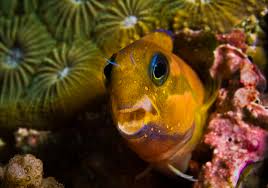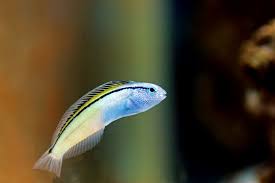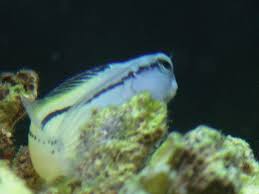
Throughout the history of cinema, flowers have played significant roles in various films and cinematic works, serving as potent symbols, narrative devices, and thematic motifs that enrich storytelling and evoke profound emotions.
**1. “American Beauty” (1999):**
Directed by Sam Mendes, “American Beauty” is a critically acclaimed film that prominently features the symbolic use of roses. The film explores themes of beauty, desire, and existentialism, with roses representing the elusive pursuit of perfection and the hidden complexities of suburban life.
**2. “The Secret Garden” (1993):**
Based on Frances Hodgson Burnett’s classic novel, “The Secret Garden” is a beloved adaptation that celebrates the transformative power of nature, including its enchanting portrayal of blooming flowers within the magical garden setting.
**3. “The Black Dahlia” (2006):**
Inspired by the infamous unsolved murder of Elizabeth Short, known as the Black Dahlia, this film noir directed by Brian De Palma incorporates dark floral symbolism, particularly focusing on the mysterious allure and tragic fate associated with the Dahlia flower.
**4. “Like Water for Chocolate” (1992):**
In this Mexican romantic drama based on Laura Esquivel’s novel, flowers hold profound significance, symbolizing passion, longing, and forbidden love. The film’s narrative unfolds against a backdrop of magical realism, where culinary creations infused with emotions are imbued with the essence of flowers.
**5. “The Flower of My Secret” (1995):**
Directed by Pedro Almodóvar, this Spanish film explores themes of identity and personal reinvention through the lens of a romance novelist who uses flowers as inspiration for her writing. The film delves into the transformative power of creativity and self-discovery.
**6. “Perfume: The Story of a Murderer” (2006):**
Set in 18th-century France, this adaptation of Patrick Süskind’s novel revolves around a gifted but disturbed perfumer who becomes obsessed with capturing the essence of an elusive scent, leading him on a dark journey where flowers play a central role in his pursuit of perfection.
**7. “Big Fish” (2003):**
Directed by Tim Burton, “Big Fish” incorporates vibrant floral imagery to evoke themes of imagination and storytelling. The fantastical narrative features larger-than-life characters and settings, including a mystical field of daffodils that symbolize hope and renewal.
**8. “Bright Star” (2009):**
This biographical drama directed by Jane Campion portrays the tragic romance between poet John Keats and Fanny Brawne. Flowers, particularly the delicate blossoms of the English countryside, serve as poignant symbols of love, longing, and poetic inspiration.
**9. “Silence of the Lambs” (1991):**
While not centered on flowers, this psychological thriller incorporates floral imagery through the character of Buffalo Bill, who uses moth chrysalises to represent transformation. The film’s unsettling tone is enhanced by the juxtaposition of beauty and horror.
**10. “Little Shop of Horrors” (1986):**
A cult classic musical comedy, “Little Shop of Horrors” features a man-eating plant named Audrey II, whose exotic and carnivorous nature challenges traditional perceptions of floral innocence, offering a whimsical yet macabre exploration of botanical fascination.
These films represent a diverse array of genres and storytelling styles, each utilizing flowers in unique ways to enhance narrative depth, thematic resonance, and visual storytelling. Stay tuned for Part 2 of this article, where we’ll explore more cinematic works that prominently feature flowers.
**Famous Films and Cinematic Works About Flowers (Part 2)**
In the world of cinema, flowers continue to serve as captivating symbols and thematic elements, enriching stories with their beauty, symbolism, and emotional resonance. Let’s explore more renowned films and cinematic works that prominently feature flowers:
**11. “Midsommar” (2019):**
Directed by Ari Aster, “Midsommar” is a horror film set against the backdrop of a pagan festival in Sweden. Flowers, particularly those associated with rituals and ceremonies, play a central role in the film’s eerie atmosphere and thematic exploration of nature worship.
**12. “A Little Romance” (1979):**
This romantic comedy-drama follows the adventures of two young lovers who embark on a journey across Europe. The film’s charming narrative is complemented by picturesque scenes of blooming flowers, symbolizing the blossoming of young love and the fleeting nature of happiness.
**13. “Rebecca” (1940):**
Directed by Alfred Hitchcock and based on Daphne du Maurier’s novel, “Rebecca” features a haunting portrayal of the iconic Manderley estate, surrounded by lush gardens and manicured grounds. Flowers, particularly the eerie presence of rhododendrons, contribute to the film’s gothic atmosphere and psychological tension.
**14. “The Painted Veil” (2006):**
Set in 1920s China, “The Painted Veil” is a romantic drama that unfolds against a backdrop of stunning landscapes and exotic flora. Flowers symbolize renewal and personal growth, reflecting the characters’ emotional journeys amidst cultural and political upheaval.
**15. “Enchanted April” (1991):**
Based on Elizabeth von Arnim’s novel, “Enchanted April” transports viewers to the picturesque Italian Riviera, where a group of women seeks solace and transformation amidst the beauty of blooming gardens and vibrant flowers. The film celebrates the restorative power of nature and friendship.
**16. “In the Mood for Love” (2000):**
Directed by Wong Kar-wai, “In the Mood for Love” is renowned for its visually striking cinematography and evocative use of flowers to convey unspoken emotions. Floral motifs, such as the recurring image of a flower in a buttonhole, serve as poignant symbols of desire and forbidden passion.
**17. “Little Women” (2019):**
Greta Gerwig’s adaptation of Louisa May Alcott’s classic novel features enchanting scenes of seasonal blooms, reflecting the changing seasons and the emotional landscapes of the March sisters. Flowers symbolize growth, resilience, and the passage of time in this heartfelt coming-of-age story.
**18. “The Orchid Thief” (2002):**
Based on Susan Orlean’s non-fiction book, “The Orchid Thief” explores the captivating world of orchid enthusiasts and collectors. Flowers, particularly rare orchid species, become metaphors for obsession and the intricate beauty of nature.
**19. “The Virgin Suicides” (1999):**
Directed by Sofia Coppola, this haunting drama captures the mysterious allure of adolescence amidst a backdrop of suburban decay. Flowers, notably the ethereal presence of blooming trees and wildflowers, symbolize innocence, longing, and the ephemeral nature of youth.
**20. “Vertigo” (1958):**
Alfred Hitchcock’s psychological thriller features striking visuals of floral patterns and motifs, enhancing the film’s themes of obsession, deception, and identity. Flowers, particularly the haunting image of a bouquet, become symbols of psychological turmoil and fractured realities.
These films exemplify the diverse ways in which flowers are incorporated into cinematic storytelling, enriching narratives with their symbolic potency and visual allure. Whether as subtle motifs or prominent visual elements, flowers continue to captivate audiences and evoke profound emotions on the silver screen.
—
This section explores additional films that showcase the multifaceted role of flowers in cinema, from their symbolic resonance to their aesthetic contributions to storytelling.









